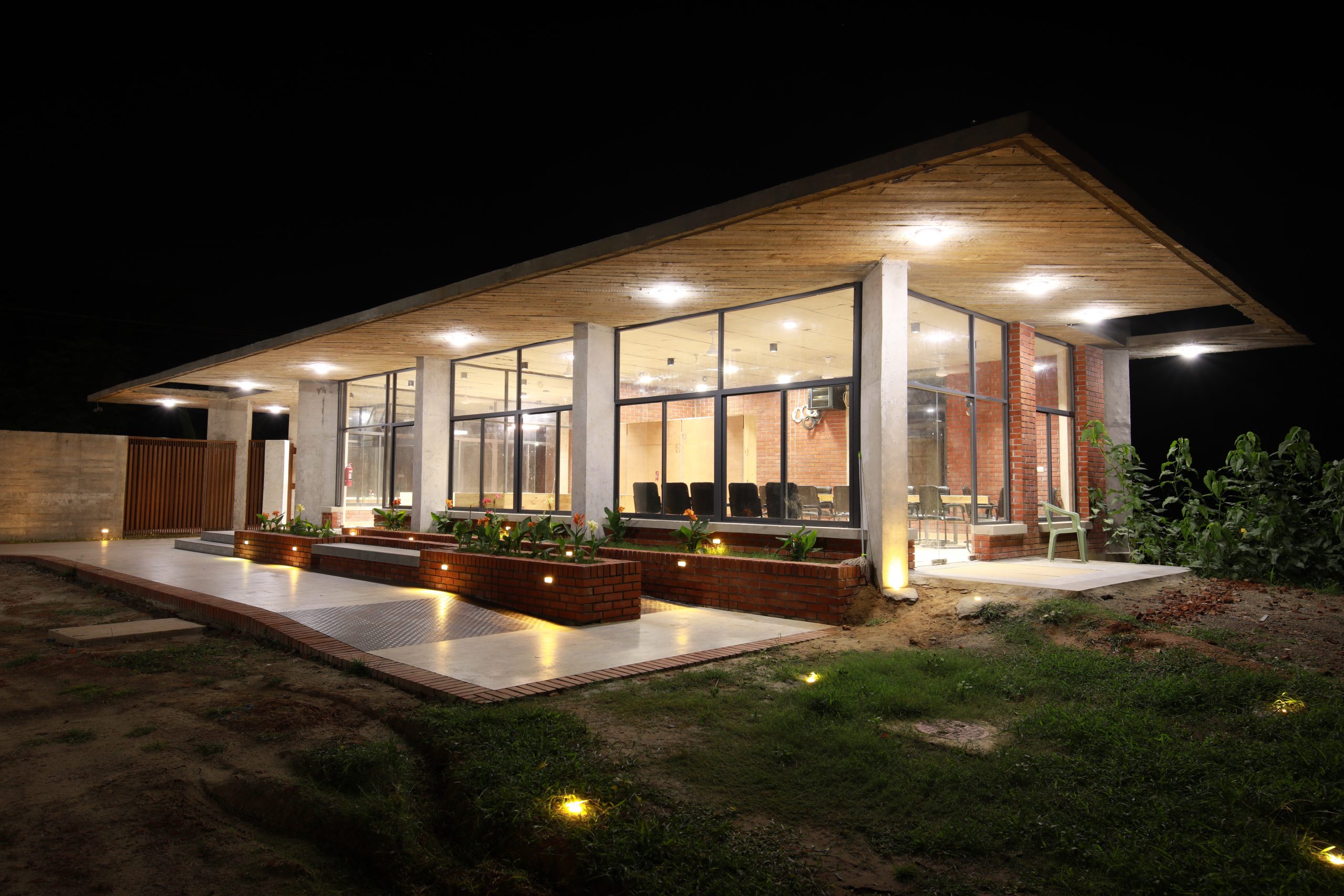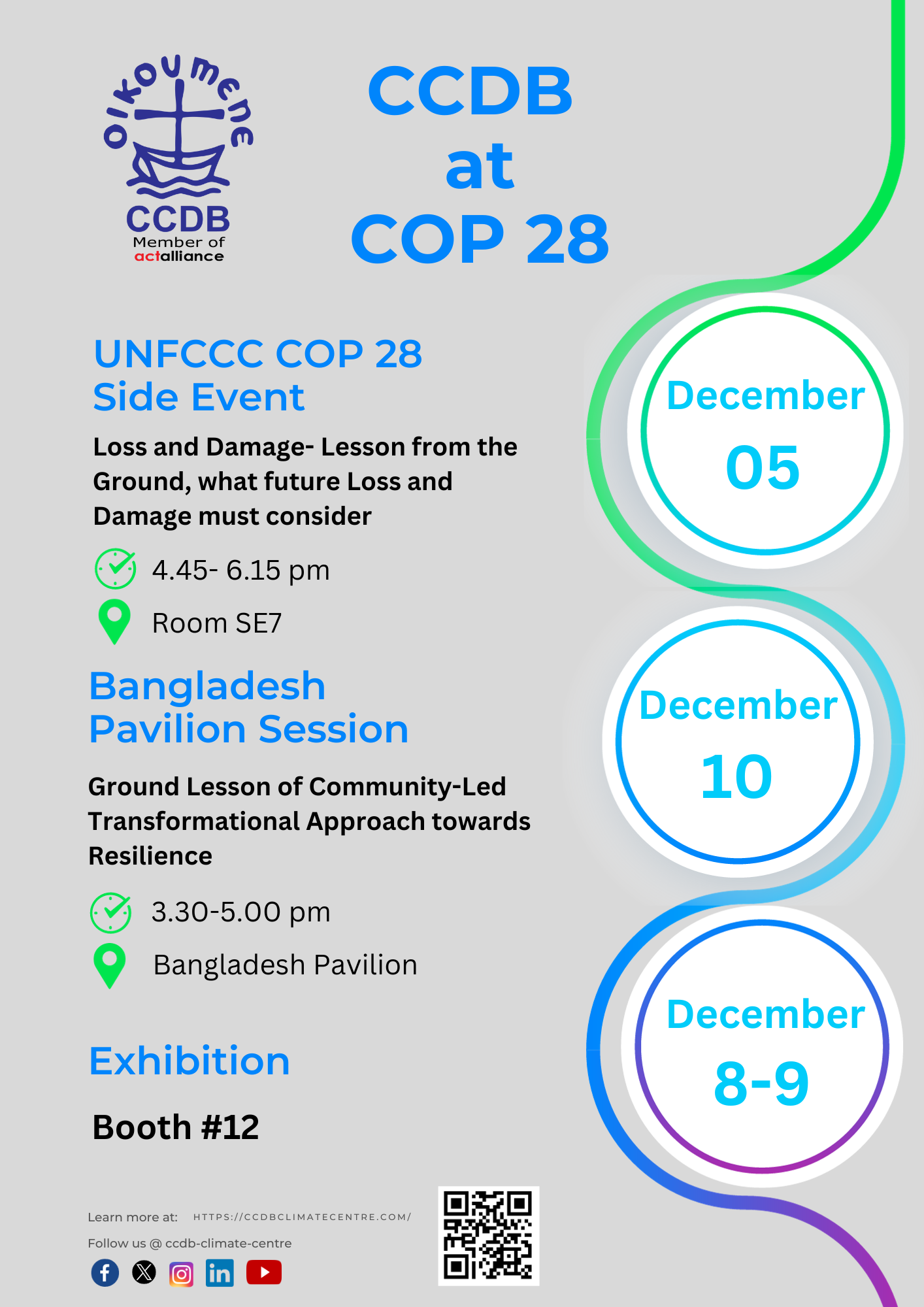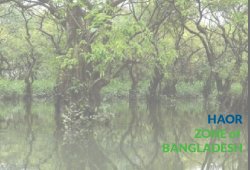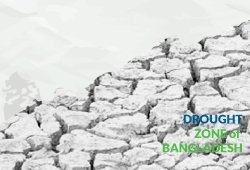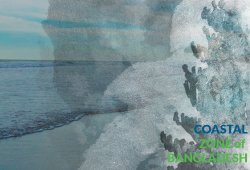I and my team members from CCDB Climate Change Program visited the climate centre on 9th February 2022. As I were a new employee at that time, it was my very first visit to the Climate Centre. We started from Dhaka in the early morning and had our breakfast at Maona, Gazipur. We arrived at the Centre at 10 am. Then we greeted everyone at the office and had coffee. Meanwhile, the other team came, and then we started our tour to the Climate Centre.
We started the tour by entering the main gate through the reception desk. At the reception desk saw the sofas and tables made with bamboo. It amazed me. And what amazed me most was the wall of the reception, it was made from different types of soil from all areas of Bangladesh. The difference between the soils was visible to us. It really was astonishing. Then we went to the learning centre. We saw the outdoor and indoor exhibition rooms, library, and young learner’s zone, playground for children, training and conference room. In the library room, we saw that people can read there in the sunlight, not by the light. I have never seen a room like this. Again I got stunned.
Then we had a short lunch break. After eating we started the second half of the journey. We went to the five representative zones of Bangladesh. We first went to the Coastal area and saw the technologies and the waterbody situated there. Then saw the Char and hill area. The hill area is still under construction. Hope it will be soon constructed and we will be able to enjoy the scenic beauty of the hill region of Bangladesh. After that, we went to the Drought area, which has a circular area filled with different crops of the area. From the upper aerial view, it looks like pizza and it seems like the ‘apple logo’ as it has a section that seems like a person had a bite on the pizza slice.
Later we went to the Char area and saw the amazing technologies there. The house is run by ‘Solar System’ and this was my first time seeing a house like this. I also liked the ‘hanging garden’ in the yard. At that time the sun was setting, and we enjoyed the sunset with some light snacks. And this moment was mesmerizing.
Then we rested for some time. After the winter night settled around 8.00 PM, we went out to experience the nightlife of the Climate Centre. The staff of the centre told us about foxes that live near the centre. We started on the electric car of the centre to visit the five ecological zones at night. The winter fog and air were really chilly that day. We were literally freezing. After rounding almost all the zones we went to the far end of the ‘Char’ zone. The zone was completely dark and it felt frightening. We could watch the watch towers from afar and hear some music on the radio. But who was there I could not see. It was feeling like nobody is there, only the music is playing. From there we came back to the office area and then went outside the centre to experience the village marketplace. We went there and had tea and snacks. We roamed around the market for some time and then came back.
After having a grand dinner, we went to our rooms. And it was the end of the day, do not know about the others but I was too tired to wait to hear the howling of the foxes. I just went to the bed and slept.
It is the end of my story about a night in the climate centre.

